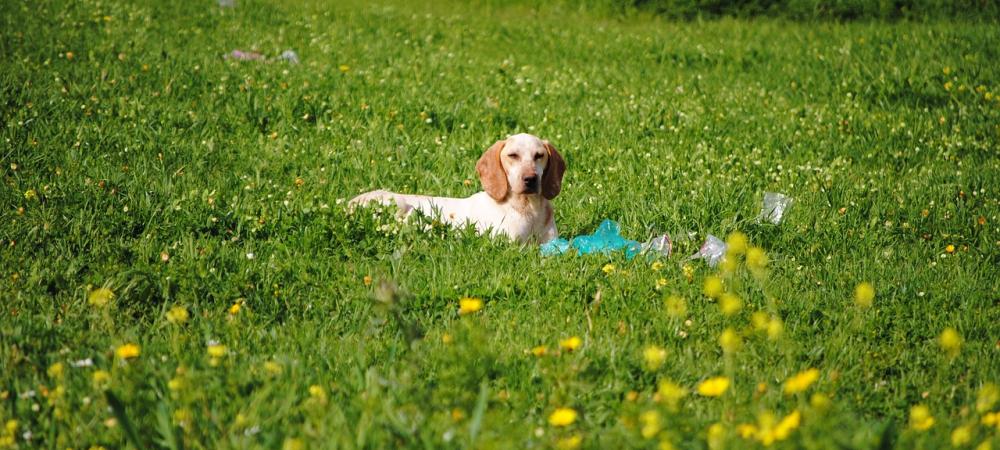Fleas in Greenville, SC: The Complete Guide

Fleas are tiny, resilient creatures that can wreak havoc on pets and humans, causing discomfort and irritation. Whether you're a concerned pet owner or simply curious about these troublesome insects, read on to learn how to keep your home and furry friends flea-free in Greenville, SC.
What Do Fleas Look Like?
To the human eye, fleas appear as tiny, dark-colored insects with distinct shapes. Here's what fleas look like when observed closely:
- Size: Fleas are very small, typically measuring about 1/16 to 1/8 inch (1.5 to 3.3 mm) in length. They are similar in size to a small grain of sand or poppy seed.
- Color: Fleas are usually reddish-brown to dark brown in color. The color may vary slightly depending on the species and their age.
- Body Structure: Fleas have flattened bodies that allow them to move efficiently through fur, hair, or clothing. Their flattened shape also aids them in quickly navigating through the host's environment.
- Legs: They have six legs, which are well-adapted for jumping. Fleas are exceptional jumpers and can leap impressive distances relative to their size.
- Shape: Fleas have a distinctive oval-shaped body with a tough exoskeleton that provides protection and support.
Due to their small size and ability to move rapidly, fleas can be challenging to spot with the naked eye, especially on pets with dense fur or in dark areas of the home. However, their bites often detect their presence, which causes itchy, red welts on the skin.
What Do Flea Eggs Look Like?
Flea eggs are minuscule, about the size of a grain of sand. Since they are pearly white and translucent, they are invisible to the naked eye on most surfaces. If you have a microscope, you’ll see that they are oval-shaped and slightly curved like a grain of rice with a smooth surface.
Where Do Fleas Come From?
Fleas typically come from outdoor environments and can find their way into homes and other indoor spaces through various means. Here are the common sources from which fleas originate:
- Wildlife and Stray Animals: Fleas often infest wildlife such as raccoons, squirrels, rabbits, and feral cats and dogs. When these animals come into contact with your pets or enter your property, they can leave flea eggs and larvae behind.
- Neighboring Infested Properties: If your neighbors have a flea infestation, the pests may also find their way into your home.
- Pet Contact: Pets, particularly cats and dogs, are common carriers of fleas. If your pets spend time outdoors or interact with other animals, they may pick up fleas and bring them into your home.
- Outdoor Environments: Fleas thrive in grassy, shady, and humid areas. Your yard, garden, or nearby parks can serve as breeding grounds for fleas.
- Indoor Infestations: Fleas can also originate from infestations inside your home. The infestation could recur if you had a flea problem previously and didn't fully eliminate all life stages.
- Used Furniture or Clothing: Fleas can hide in secondhand furniture, rugs, or clothing you bring into your home.
- Wild Bird Nests: Fleas may be present in nests built by wild birds near your home.
How Long Can Fleas Survive Without a Host?
Fleas can survive for several days to months without a host, depending on the stage in their lifecycle and environmental conditions. Eggs are not reliant on a host and can survive for several weeks to months in the environment. Flea pupae can also survive for a while without a host since they are in a protective cocoon. Both flea larvae and adult fleas can only go several days to a couple of weeks without a host.
How to Stop Fleas From Biting You
To stop fleas from biting you, follow these preventive measures:
- Use Insect Repellent: Apply insect repellent containing DEET or picaridin to exposed skin to deter fleas from biting.
- Avoid Infested Areas: Try to avoid areas known for flea infestations, such as tall grass, wooded areas, or places with stray animals.
- Use Flea Preventatives: If you have pets, use veterinarian-approved flea preventatives regularly to keep fleas from hitchhiking into your home.
- Vacuum Frequently: Regularly vacuum carpets, rugs, and upholstered furniture to remove flea eggs and larvae.
Can Fleas Bite Through Clothes?
Yes, fleas can bite through clothes, especially if the fabric is thin or loosely woven. Fleas have specialized mouthparts that allow them to pierce the skin of their hosts and feed on their blood. While clothing provides some barrier against flea bites, it may not always be sufficient to prevent them from reaching the skin, particularly in areas where clothing is snug or thinner.
How to Get Rid of Fleas
Getting rid of fleas on your own can be achieved through a combination of preventive measures, natural remedies, and targeted treatments. Here's a step-by-step guide to help you tackle flea infestations:
- Pet Treatment: Start by treating your pets with veterinarian-approved flea control products, such as topical treatments, oral medications, or flea collars.
- Wash Bedding and Linens: Launder your pet's bedding, your bedding, and any affected linens in hot water to kill fleas and their eggs.
- Steam Cleaning: Consider using a steam cleaner on carpets and upholstery, as the high temperatures will help kill fleas and their life stages.
- Natural Repellents: Use essential oils like peppermint, lavender, or eucalyptus as natural flea repellents. Dilute a few drops in water and spray it on pet bedding and around the house.
- Flea Traps: Set up flea traps with a light source over a dish of soapy water to attract and drown fleas.
- Consistency: Flea control requires persistence. Continue regular pet treatments, vacuuming, and preventive measures to ensure long-term success.
Remember, flea control is ongoing, and multiple treatments may be necessary. If the infestation persists or becomes overwhelming, consider seeking professional pest control assistance to eliminate fleas from your home effectively.
Diatomaceous Earth for Fleas
Diatomaceous Earth (DE) is a natural and non-toxic remedy commonly used to control fleas. When DE comes into contact with fleas, it damages their exoskeletons, causing dehydration and eventually leading to their demise. Diatomaceous Earth is safe for pets and humans but should be applied cautiously. To use it effectively, sprinkle a thin layer of DE in areas where fleas are present, such as pet bedding, carpets, and crevices. Leave it for a few days before vacuuming thoroughly to remove dead fleas and their eggs.
Professional Flea Treatment in Greenville, SC
Fleas can be difficult to get rid of on your own, no matter how many DIY methods you try. If you’re struggling with fleas in your home, yard, or on your pets, call ProCore! Our team offers flea prevention and elimination services that will keep your property pest free. For flea control in Greenville you can trust, call us for a free estimate today.
